_We may earn revenue from the products available on this page and participate in affiliate programs. Learn more ›
_
Best Fixed-Blade
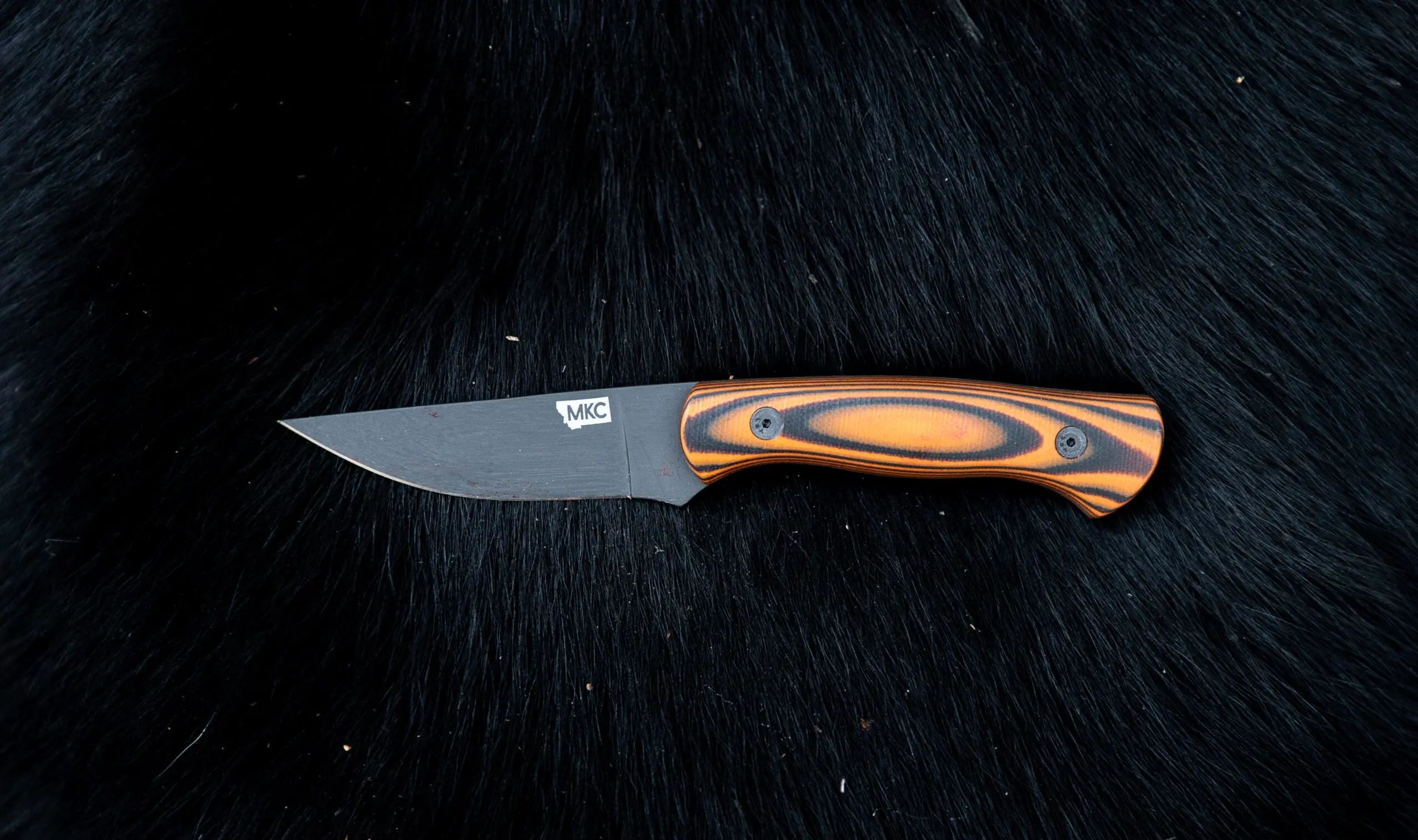
Montana Knife Company Blackfoot
Best Budget
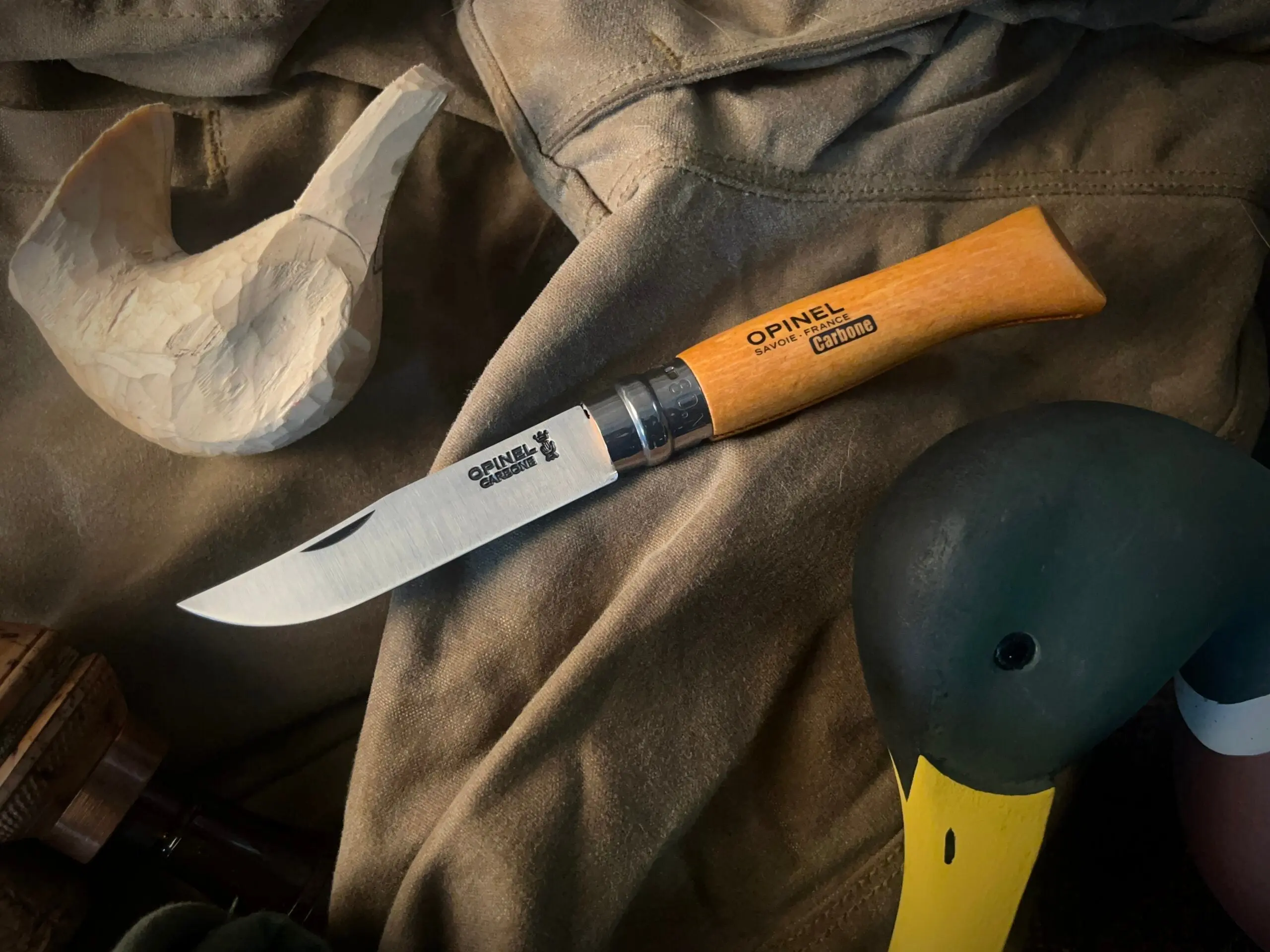
Opinel No. 08 Carbone
Best Butcher Knife
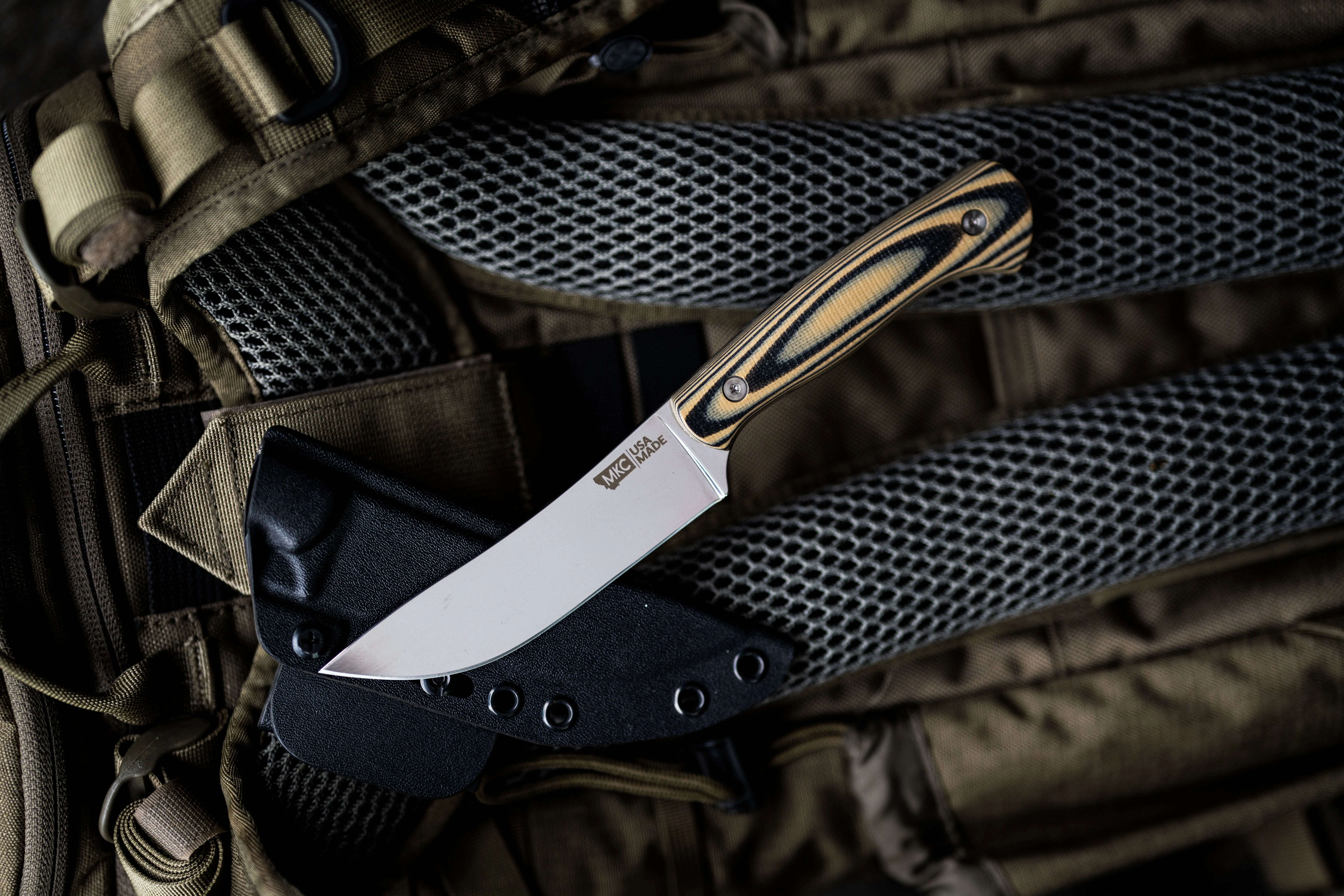
Montana Knife Company Stonewall Skinner
There are a lot of hunting knives out there, but these are a few of the best. We couldn’t cover every hunting knife, but choose one from the list below, and you will not be ill-equipped. From $300 skinners to $20 folders, we tested a variety of blades in every budget. We evaluated them for edge retention, quality, and versatility. Our selection leans toward big-game fixed blades, but there are plenty of knives here suited to dressing everything from waterfowl to water buffalo. Here are some of the best hunting knives you can buy.
The Best Hunting Knives
Best Fixed-Blade: Montana Knife Company Blackfoot
(96 points)
Best Folding: Giantmouse Ace Jutland
(94 points)
Best Under $100: Gerber Downwind Drop Point Knife
(93 points)
Best Budget: Opinel No. 08 Carbone
(81 points)
Best Butcher Knife: Montana Knife Company Stonewall Skinner
(92 points)
Best Benchmade Hunting Knife: Benchmade Steep Country
(94 points)
Honorable Mentions
(84 points)
Beretta Loveless Drop Point Hunter
(85 points)
Best Fixed-Blade: Montana Knife Company Blackfoot
Best Fixed-Blade

Specs
Blade Length: 3.5 inches
Blade Style: Drop point
Blade Steel: 52100 Ball-bearing steel, parkerized and mirror finish
Handle Material: G10
Pros
Well suited to big game and small game
Controllable
Good edge retention
Durable
Cons
Price (but this knife is worth it)
I could have touched up the Balckfoot before our cut test, but just for the hell of it, I jumped right in even though I used it all last duck season. Its 52100 ball-bearing steel breezed through 20 cuts of one-inch sisal rope, maintaining a sharp edge throughout the test. The G10 handle is comfortable, well-finished, and the perfect size for any hunting knife task. It’s full-tang construction is extremely strong. This is the kind of knife you can put away bloody and rinse off next hunting season, and it will be just as sharp as the last time you used it.

Montana Knife Company’s Blackfoot took home the award for the best fixed blade knife in our test. Montana Knife Company
All MKC knives come with a Kydex sheath that features an adjustable belt clasp. I’d take this knife anywhere and field dress everything short of an elephant with it. The only downside is the price, but honestly, it’s worth it. It may be the last knife you’ll ever buy.
Best Folding: Giantmouse Ace Jutland
Best Folding
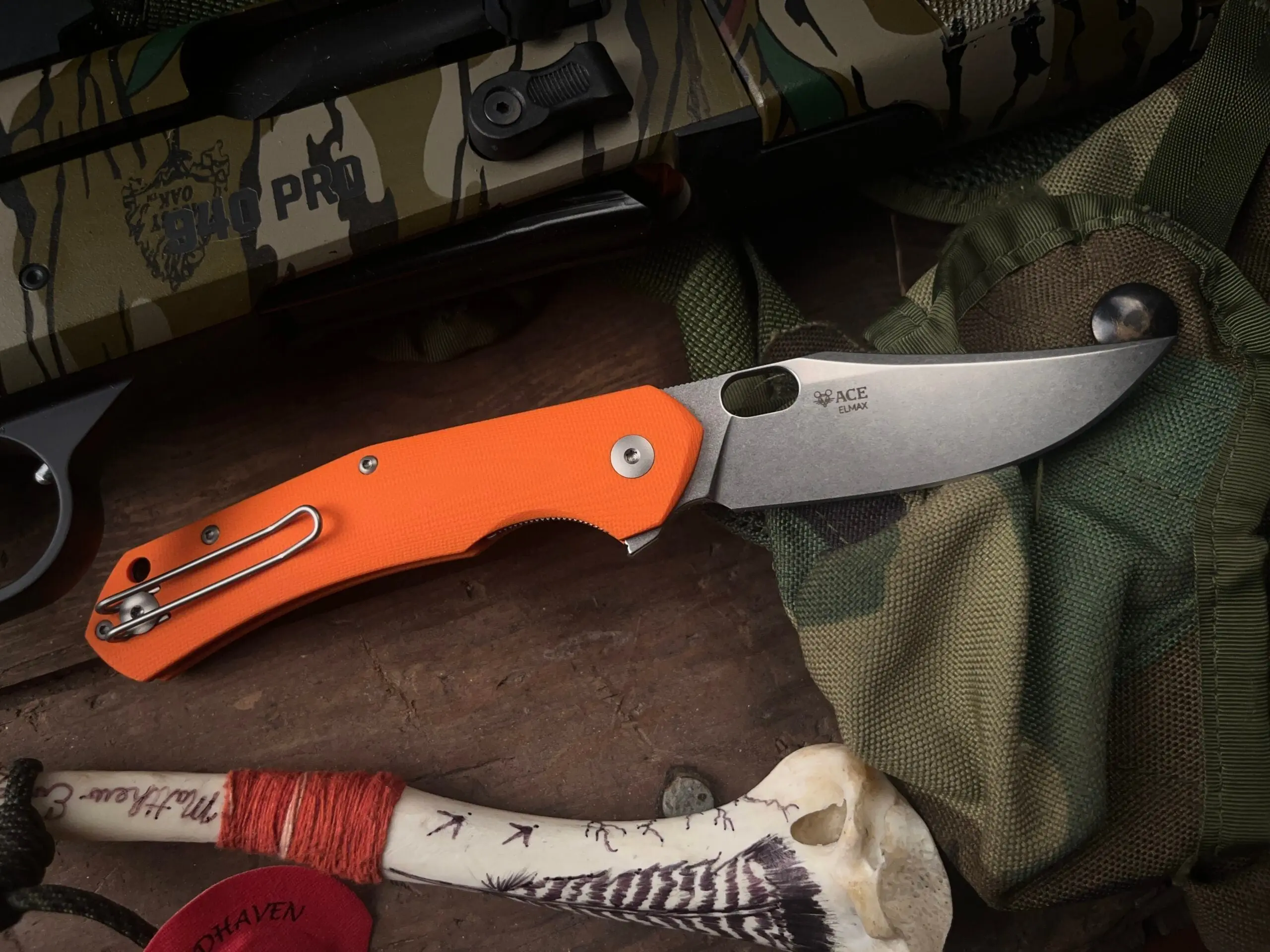
Specs
Blade Length: 3.35 inches
Blade Style: Clip point
Blade Steel: Vanadis 4E with PVD finish, AISI 420 with bead-blasted finish
Handle Material: Burlap micarta, canvas micarta, G10
Pros
Strong folding mechanism and lock
Excellent fit and finish
Easy to clean
The swept blade profile is good for skinning
Cons
Price, but value for money is through the roof
The Ace Jutland is one of the best folding knives I’ve ever put my paws on. We had two versions for review, one with an orange G10 handle and another with a burlap micarta handle and a brass insert. I haven’t stopped carrying the orange one since it came in, and if Giantmouse will let me, I’d like to hunt with it all season. The Jutland opens with a thunk, like a vault door, and stays open via a liner lock. When closed, it’s secure—no matter how hard I tried, I couldn’t shake it open.
The AISI 420 blade came shaving sharp out of the box. It sliced through 20 inches of sisal rope without a hiccup. Just for the hell of it, I decided to keep cutting until it wouldn’t cut anymore, and it cut through 15 more inches of rope before kind of tapping out (I’d still break down a deer with it.) It’s clip-point blade reminds me of a Buck 110, and it kind of feels like the 21st-century version of that classic knife. For the quality of this knife, the price is reasonable, but compared to bargain-basement folders, it might give you some sticker shock.
Best Under $100: Gerber Downwind Drop Point Knife
Best Under $100
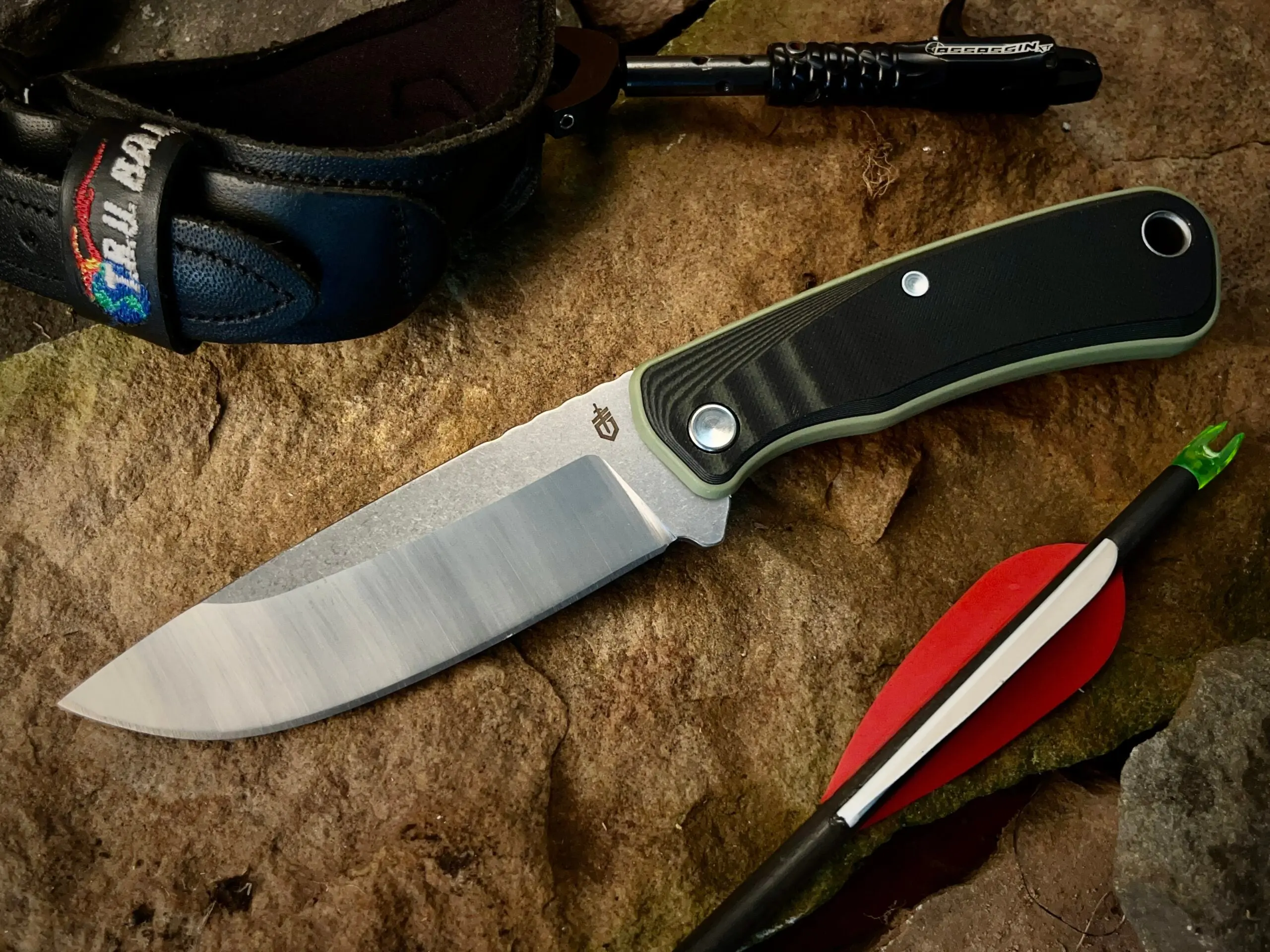
Specs
Blade Length: 4.25 inches
Blade Style: Drop point
Blade Steel: 7Cr
Handle Material: G10
Pros
Well finished
Holds an edge
Comes with a good sheath
Cons
The blade is too big for small game
For around $50, you can have a big-game hunting knife that not only looks good but cuts like crazy. Our Downwind Drop Point breezed through 20 inches of sisal rope and kept shaving paper through 16 of those cuts. And this is no surprise. Gerber has spent decades making quality blades at a price any hunter can afford. You can also find this knife just about anywhere—from big-box stores to small outdoor shops. At 4.25 inches overall, the Downwind is strictly a big game knife, in my opinion. (It could be used for tasks around camp, too.) Those who like big hunting knives will appreciate this. What’s really nice about the Downwind though is that its finished beautifully for the money. It also comes in a nice canvas sheath with a durable plastic liner. The handle is comfortable and the blade is wide, giving you plenty of purchase if you need to choke up on it for a finer cut.
Best Budget: Opinel No. 08 Carbone
Best Budget

Specs
Blade Length: 3.28 Inches
Blade Style: Clip point
Blade Steel: XC90 Carbon
Handle Material: Wood
Pros
Cheap and easy to sharpen
Proven design
Lightweight
Cons
Wooden handle expands and contracts with moisture
Will not put up with rugged use
I’ve lost more Opinel Carbone’s than I can count, but it doesn’t bother me because they only cost about $20 (I’ve seen them as cheap as $15). When I worked as a whitetail guide, I’d use one to gut and skin just about every buck that came into camp. They’re also an ideal size and shape for small game and birds. The downside to these knives is that you will need to sharpen them periodically while working through a deer. One upside, though, is that almost anyone can get a Carbone’s carbon-steel blade shaving-sharp in seconds. If you’re prissy about a blade getting rusty or discolored, buy the stainless version instead. For everybody else, caring for an Opinel Carbone is simple—you’ll just need to use a brush to wash debris from the handle and dry the blade when it gets wet. Under normal use, you shouldn’t break your Opinel No. 08, but I have seen them chip and get worn down with sharpening. By the time they do, though, you’ll probably have another $20 bill to spend on a new one.
Best Butcher Knife: Montana Knife Company Stonewall Skinner
Best Butcher Knife

Specs
Blade Length: 4.75 inches
Blade Style: Skinner/butcher
Blade Steel: 52100 Ball bearing steel, parkerized and mirror finish
Handle Material: G10
Pros
Sharp as hell
Puts up with a beating
Beautiful fit and finish
Cons
Price
In our house, the Stonewall Skinner is a belt knife that moonlights as a kitchen knife. And it puts up with quite a beating, with daily use cutting up veggies and meat. It’s a knife that I wish I had when working as a guide because I spent a lot of my time skinning and processing deer. It’s swept-back blade is exactly what you want when trying to peel the hide off a critter. It’s a big knife, too, making it perfect for cutting a steak from a hind quarter.
But the Stonewall Skinner is not a knife to leave in a drawer with the rest of your butchering tools. It’s small enough to pack on a hunt and would be an asset in camp. Should you need to press it into service for field dressing, I’m sure it would be up to the task. Oh, and it’s razor-sharp, holding its edge well past 20 rope cuts in our test. Like other MKC knives, it comes at a price. But you could spend years with, and just as much money, on three lesser knives only to realize you should have bought the Stonewall Skinner.
Best Benchmade Hunting Knife: Benchmade Steep Country
Best Benchmade Hunting Knife
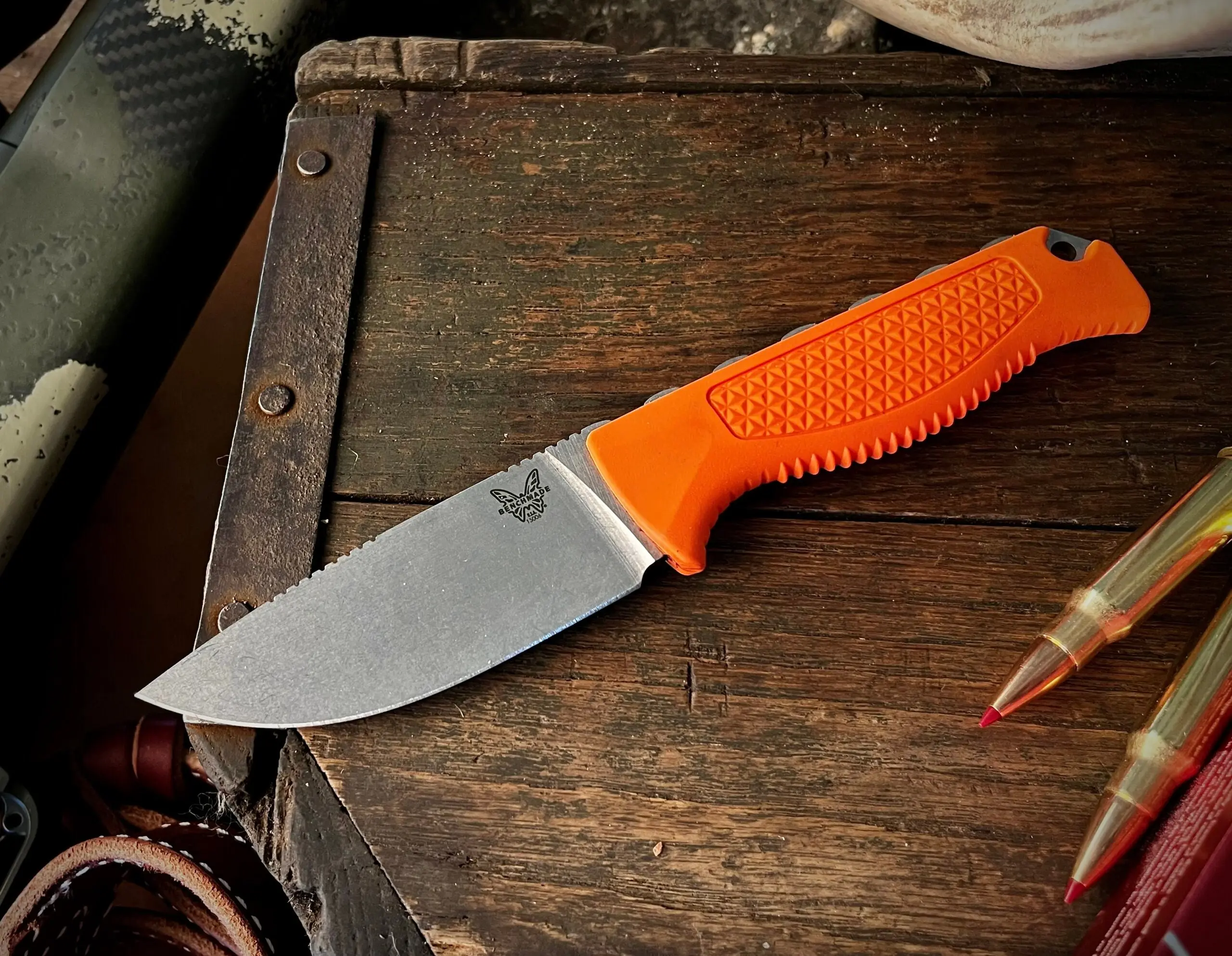
Specs
Blade Length: 3.5 inches
Blade Style: Drop point
Blade Steel: S30V
Handle Material: Santoprene
Pros
Extremely sharp
Holds and edge
Excellent fit and finish
Great value for the price
Cons
The sheath does not come with a belt loop
If we could give two awards for the Best Overall Knife, the Benchmade Steep Country would be right there with the MKC Blackfoot. I’ve taken one hunting for mule deer and whitetails, and it has been more than up to every task—from field dressing to breaking an animal into quarters. For me, it’s the ideal size for a big-game knife and a bit large for small game, but it would still get the job done on birds and rabbits.
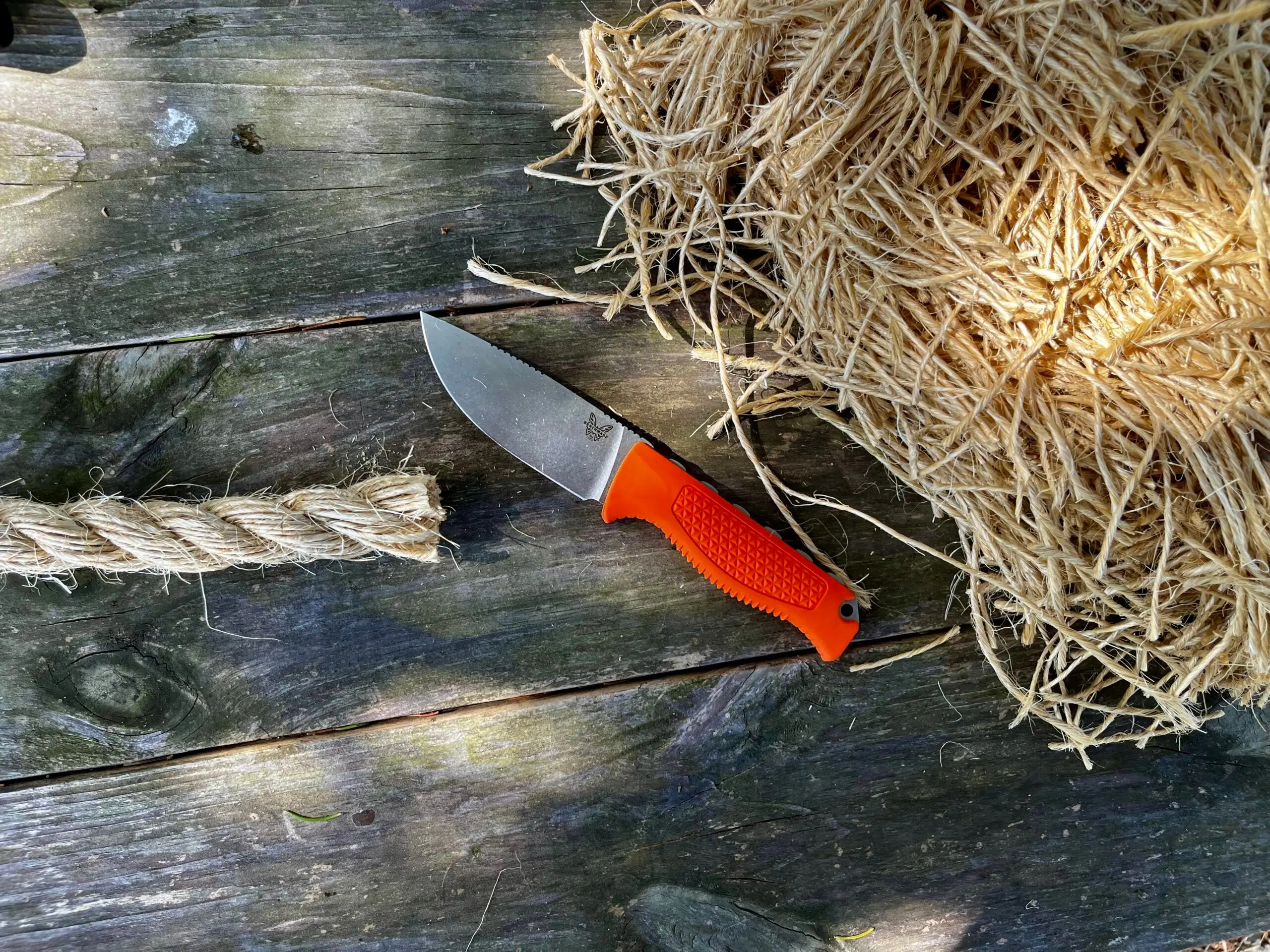
The Benchmade Steep Country excelled in the rope-cutting part of the test. Matthew Every
Out of the box, the Steep Country’s S30V steel is so sharp it will give you heart palpitations. In the rope-cutting test, it cut like a lightsaber. It cut so well that I decided to keep going for an astonishing 50 cuts. I could cut more inches of rope, but my hand hurt, and I wanted to stop. The Santoprene handle is the same as on another one of Benchmade’s best knives
, the Meatcrafter
. It’s grippy when wet, but not obnoxiously grippy when dry. My only complaint about the Steep Country is the lack of a belt loop on the sheath, but that could be remedied with an aftermarket clip or some paracord, or you could just carry it in a backpack. Buy a Steep Country, and you won’t need your knife sharpener for the next five hunting seasons.
(84 points)
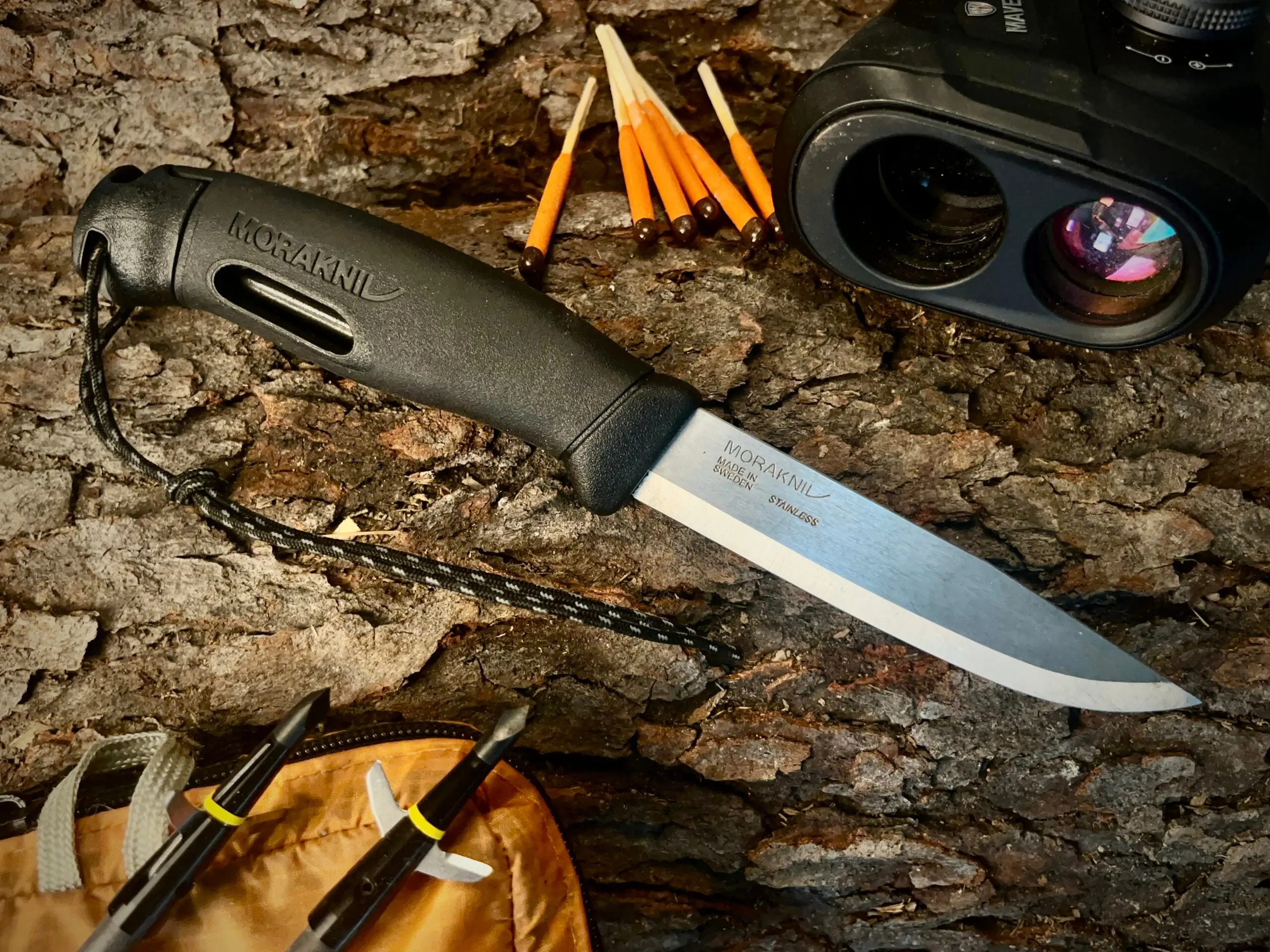
Specs
Blade Length: 4.09 inches
Blade Style: Straight, drop point, scandi grind
Blade Steel: Recycled Swedish stainless
Handle Material: Polymer
Pros
Cuts wood like a chainsaw
Can start a fire
Easy to sharpen
Good back-up knife
Cons
Not ideal for skinning and gutting, but will get the job done
The Companion Spark is not necessarily a hunting knife. But it can do hunting knife things, and it offers a lot to the backcountry hunter. When hunting in far-away places, it’s good to have a knife that you could survive with. By that, I mostly mean chopping wood and starting a fire. Using the baton technique, the Mora Companion Spark chops wood like a spitting maul. Its Scandi grind gets a good bite in softer woods like pine, and it’s perfect for making feather sticks.
Unlike other Mora Companions, the Companion Spark has a ferro rod concealed in the handle. In other words, it’s all you need to start a fire if you know how to use it. For cutting up game, the Companion Spark does a so-so job. It’s straight blade profile isn’t great at skinning. But unlike other bushcraft knives, it’s light enough to pack alongside a dedicated hunting knife, giving you an extra layer of fire redundancy and a back-up knife for use on game. In our test, it faired OK in terms of edge retention, cutting through 18 inches of rope.
The Scandi grind is also easy to touch up—just lay each beveled side on a sharpening stone and pull it across a few times.
Beretta Loveless Drop Point Hunter
(85 points)

Specs
Blade Length: 3.75 Inches
Blade Style: Drop point
Blade Steel: AUS-8 Japanese stainless
Handle Material: Black or orange Zytel
Pros
A Loveless-signed knife for around $100
Tried-and-true design
Well finished and durable
Cons
In the 1960s, R.W. Loveless designed what many feel is one of, if not the, best hunting knife pattern of all time. He called it the “dropped hunter.” Try to buy an original, and you’ll spend thousands of dollars if you can even find one. But there’s a bit of a loophole. Beretta has made a version of the design licensed from Loveless and offers it for just under $100. If the Drop Point Hunter was just a little cheaper and cut a little better, it would have taken the spot of Best Value. But it is still an exceptional value and has loads of style points.
What I like best about this knife is how well-thought-out it is. In the hand, the Zytel grip is just tacky enough and shaped perfectly. The spine of the blade is rounded half of the way toward the tip of the knife. The last half near the hilt is squared off at 90 degrees and is perfect for striking a ferro rod. The Drop Point Hunter only cut through 16 inches of rope before getting dull, but with a few quick passes on a stone, it was ready for action again. On the downside, it’s too big for some small game, and the sheath leaves a bit to be desired. However, it’s still a hell of a knife for the money.

Specs
Length: 7.55 inches
Blade Style: Saw
Blade Steel: Stainless
Handle Material: Full tang metal with plastic
Pros
Lightweight
Easy to clean
Cons
Less comfortable to use than some saws
We could have sawn a bunch of bones or tried cutting a tree down with this hunting saw, but I decided to let my field experience with this tool speak for itself. If you gut big game, the Exomod saw is indispensable. Before I owned one, I’d pack a big bone saw or use my Leatherman’s saw to split the pelvis and cut the rib cage on a deer. The bone saw was bulky, and the Leatherman saw was too small.
The Gerber Exo-Mod is just right, and it won’t add much weight to a pack or kill kit. Its rounded-off tip keeps you from puncturing the guts or the bladder when splitting a pelvis. It’s not the most comfortable saw to use, but the weight savings are worth it. I keep mine in the cargo pocket of my hunting pants and forget it’s there until it’s time to do the laundry or cut up a deer.
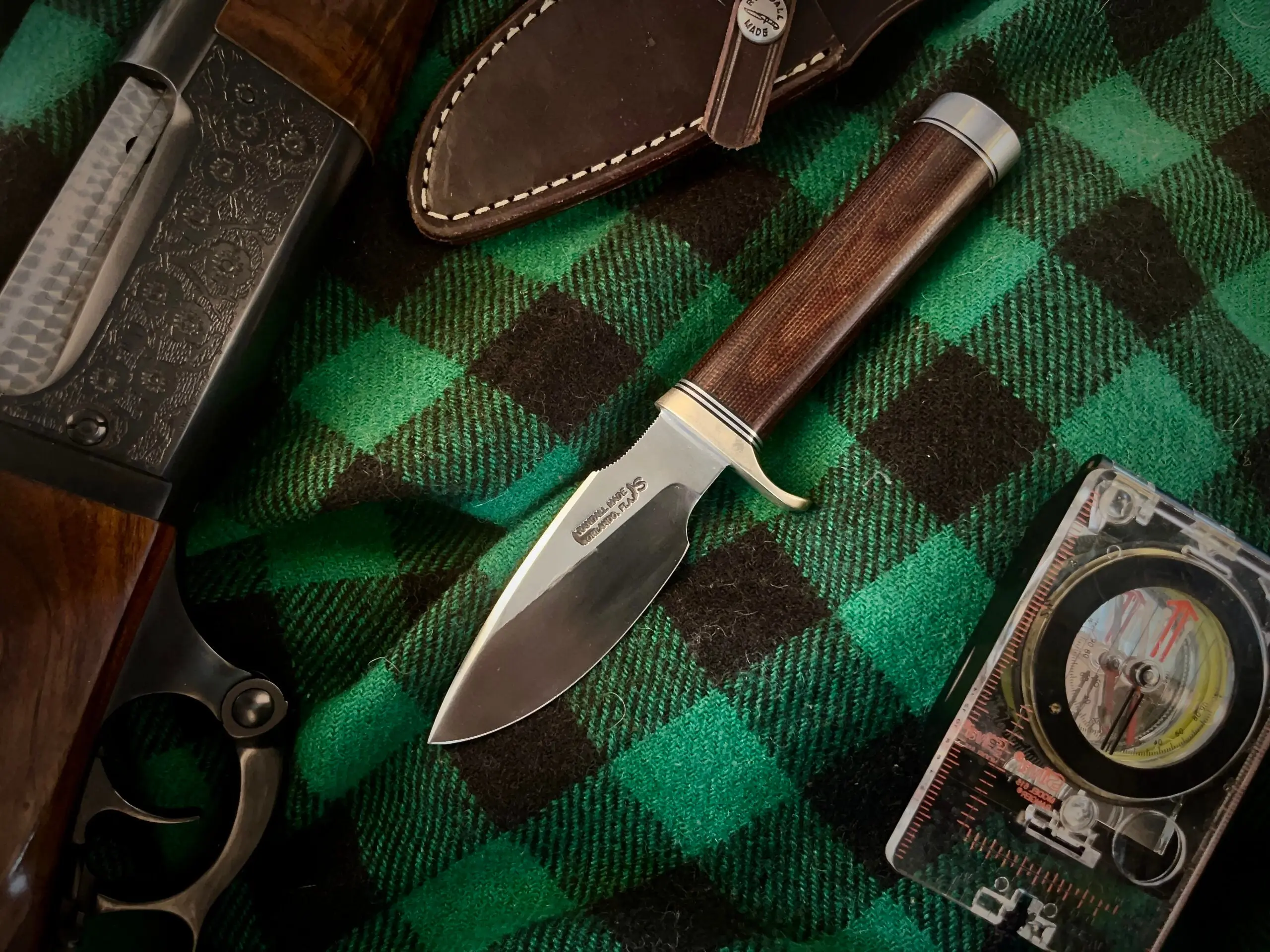
Specs
Blade Length: 4.5 inches
Blade Style: Drop point
Blade Steel: O-1
Handle Material: Various custom options
Pros
It’s a Randall—there isn’t much more to say here
Cons
Price and long wait time
Any serious hunter needs a Randall. They’ve been carried by hunters and soldiers
since the late-1930s. Songs have been written about them. Your favorite gun writer probably owns one. And NASA even sent a couple to space. It isn’t easy to get sample Randalls, and I wasn’t going take my Alaskan Skinner and cut through a bunch of rope (I think Bo Randall would rise from the dead and take his knife back if I even thought of it). But I wanted to at least mention these legendary blades on a list of the best hunting knives.
What many don’t know is that you can still order a Randall straight from the factory
in Orlando, Florida. They are expensive, but not outrageously so. And with a 6-year wait and a $50 deposit, they’re easy to save up for. What you’ll have when all is said and done will be a personalized tool that your great-grandchildren will fight over. If you’re less patient, you can buy a Randall from one of a handful of authorized dealers, or check out used Randalls from a trusted source like randallmadeknife.com
.
Hunting patterns include the Alaskan Skinner (pictured above), which is my favorite. It was designed with the help of Alaskan bush pilot Tommy Thompson in 1952. There’s also the Trout and Bird, Hunter, Small Game and Skinner, Fisherman-Hunter, Yukon Skinner, and more—all fantastic patterns well suited to any hunting task. You can only pick five custom options for each order, which include different shaped handles, hilt styles, and more.
How We Tested Hunting Knives
The most important quality of a hunting knife is edge retention. Being able to cut through hide and knick a bone or two while field dressing
goes a long way. We tested this by cutting a 1-inch sisal rope up to 20 times with each knife and sliced a piece of paper every two cuts. Knives that made it through the 20 cuts were deemed more than capable of keeping an edge. Those that could still slice paper after 16 rope cuts were given bonus points for every cut they made. Knives that didn’t make it through all 20 cuts are still capable hunting knives, they just may need to be touched up periodically.
We also evaluated knives based on their versatility. Knives that were small enough to handle fine tasks and break down small game and fish along with big game were given extra points. Knives that could handle other field tasks like striking a ferro rod or shaving a feather stick were given bonus points, too.
For fixed blades, we evaluated the sheaths on how easy they were to use and how well they kept the knives secure. For folders, we gave extra points to those that could be opened with one hand. Finally, we evaluated every knife on comfort and quality, scored for price vs. value, and noted any relevant field experience we had with the knives on past hunts.
Scoring
Edge Retention (40 points)
Versatility (10 points)
Comfort (20 points)
Sheath (or Ability to Open with One Hand) (10 points)
Build Quality (10 points)
Price vs Value (10 Points)
Hunting Knives Buying Guide
Size and Type
A good hunting knife is best suited to one task: breaking down game in the field. It should hold an edge well or be easy to sharpen. Hunting knives need to be small enough to control for tasks like gutting and skinning and large enough for popping joints and quartering. The upper end of a good blade length is 4.25 inches with smaller blades around 3 inches. Anything bigger than that and they become unwieldy. Hunters after different species might want to use different kinds of knives. While you can use a smaller knife for gutting and skinning a deer and cleaning small game, larger knives are hard to use on small game and birds. A hunting knife might also need to be pressed into service for camp tasks if you’re far from home. These include cutting branches, making tent stakes, shaving feather sticks, and slicing summer sausage.
Fixed Blade vs. Folding
Any hunter should have both a fixed blade
and a folder in their arsenal. Fixed blades are my first choice when it comes to picking a hunting knife. They give you the most strength and power and generally feel better in the hand than a folder. They’re also easier to clean after field dressing, and harder to lose because they live in a sheath attached to the hip (though, you can get a sheath for your folder, too).
A folder is great for keeping in a pocket every day during hunting season—just in case a drive down the road turns into a spot-and-stalk hunt. Folding knives are also safer when riding a horse, ATV, or e-bike, and when climbing in and out of a treestand. Falling or crashing in any of those situations could result in a fixed blade going through your leg.
FAQs
Q: What blade stays sharp the longest?
Modern steels like S30V, 52100, and AISI 420 kept an edge the best out of all the knives in our test. The amount of vanadium carbide and proper heat treatment add to a knife’s ability to keep an edge.
Q: Why are hunting knives curved?
The curve in a hunting knife helps with skinning. When pulling back the hide on an animal, it helps to have a curved blade for sweeping cuts. Some hunting knives have more pronounced curves than others.
Q: Can I carry a hunting knife on my belt?
Sure you can. It depends on where you are though. Most hunters will carry a fixed blade on their belts in the woods. Some towns, cities, and states have regulations for carrying knives. Check local laws before heading into town with a knife on your hip.
Choosing the right hunting knife all depends on what kind of game you’re after and what works best in your hands. If you’re just getting started, buy a couple of budget knives in different sizes and try them out to figure out what you like best. More experienced hunters who know what they’re after will appreciate well-finished blades and high-quality steel. But, no matter how long you’ve been hunting, any of the best hunting knives above will get the job done.
Why Trust Us
For more than 125 years, Field & Stream has been providing readers with honest and authentic coverage of outdoor gear. Our writers and editors eat, sleep, and breathe the outdoors, and that passion comes through in our product reviews. You can count on F&S to keep you up to date on the best new gear. And when we write about a product—whether it’s a bass lure or a backpack—we cover the good and the bad, so you know exactly what to expect before you decide to make a purchase.
![Field & Stream [dev]](https://images.ctfassets.net/fbkgl98xrr9f/1GnddAVcyeew2hQvUmrFpw/e4ca91baa53a1ecd66f76b1ef472932b/mob-logo.svg)





